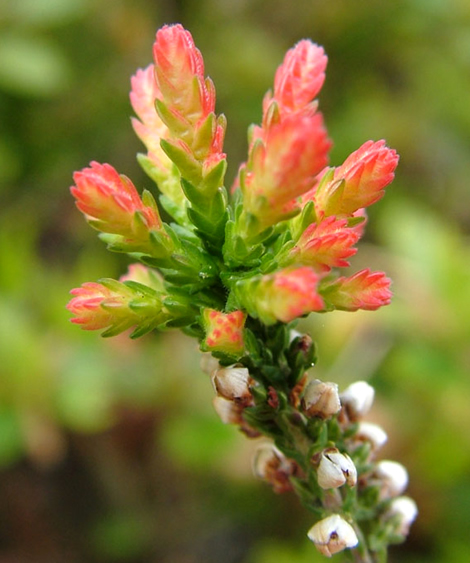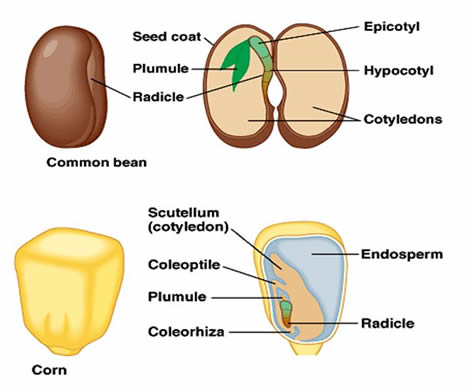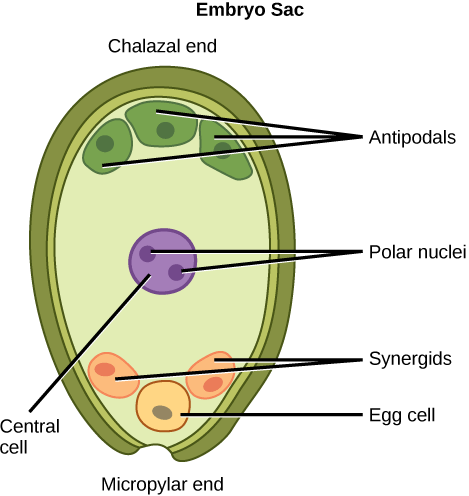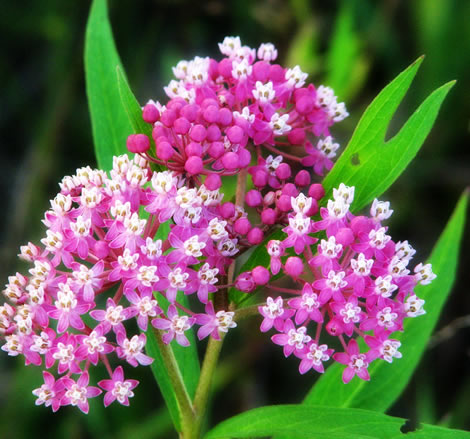 |
| Spermatophyta |
The Spermatophyta are those members of the Tracheobionta that produce seeds. At one time this category was considered to be natural, composed only of closely related groups with homologous seeds.
It is now known that seeds evolved many different times during evolutionary history and that different groups of extant seed plants may or may not be closely related to other groups of extinct or extant spermatophytes.
Scientists once thought that the seed plants were monophyletic, derived from a single common ancestor. It is now known they are polyphyletic, derived from more than one ancestral group. The distinctions can be seen in the variations among seed structures and functions.
  |
Seed Structure
A seed is a complex reproductive structure composed of multiple generations of tissue that develop from an ovule. The outer layer of the seed is usually composed of thick-walled cells of the parental sporophyte that form a seed coat.
Internal to the seed coat is typically a layer of stored food, which may consist of mega-gametophyte tissue or of a unique tissue of a new generation called endosperm.
At the center of the seed is a new embryonic plant that emerges to become the seedling when the seed germinates. Scientists recognize two basic types of seed plants: gymnosperms and angiosperms.
Gymnosperms are plants with “naked seeds.” That is, the ovule is exposed to the environment and is not covered by a protective layer. In angiosperms, by contrast, the ovule is contained within a specialized structure, the carpel.
The outer layer of a seed, the seed coat, develops from the outer layers of the ovary, the integument. The integument is composed of sporophyte tissue of the parent plant. As the integument develops, it forms an enlarging sheath around the central ovule tissue, the nucellus.
 |
| Seed structure |
The integument does not completely enclose the nucellus but leaves a small pore, the micropyle, through which pollen grains or the pollen tube will move prior to fertilization. A megaspore mother cell within the nucellus undergoes meiosis to produce four megaspores.
In gymnosperms, only one megaspore is functional, and it develops into a female gametophyte containing archegonia. In angiosperms, one, two, or all four of the megaspore nuclei may contribute to the female gametophyte.
In gymnosperms, a single egg forms within each archegonium. Pollen grains are drawn into the micropyle, and the pollen germinates to forma pollen tube.
In most gymnosperms, the pollen tube grows through the nucellus until it reaches the archegonium, where the sperm are released to fertilize the egg. The fertilized egg, or zygote, grows into an embryo, a new sporophyte generation. Meanwhile, the integument enlarges to close the micropyle and hardens to form the seed coat.
   |
The remaining tissue of the female gametophyte functions as a store of food to nourish the embryo until the seed germinates. Because multiple archegonia are formed in the female gametophyte, more than one egg may be fertilized within a single ovule, but usually only a single embryo grows to full size.
In angiosperms the entire female gametophyte usually consists of a seven-celled embryo sac. Three cells, the egg and two synergids, lie near the micropyle.
Three cells, the antipodals, form on the end opposite the micropyle. The remaining central ell contains two nuclei, the polar nuclei. Pollen germinates on the outside of the carpel in a specialized region called the stigma.
The pollen tube grows down through the carpel tissue toward the ovules and eventually grows into the micropyle and through the nucellus of one ovule until it reaches a synergid. The sperm nuclei are discharged into the synergid cell, which subsequently degenerates.
 |
| Angiosperms seed |
One sperm goes on to fertilize the egg, while the second fertilizes both polar nuclei. The fertilized egg develops into a diploid embryo in a manner similar to that of gymnosperms. The product of the other sperm and the two polar nuclei is a triploid cell, the primary endosperm.
The endosperm cell also undergoes mitosis to form a multicellular triploid endosperm tissue,which functions directly as a stored food reserve in monocots. In dicots, the endosperm typically degenerates, and the nutrients are absorbed by the cotyledons of the embryo, which then serve as a food reserve.
Seed Function
Reproduction by means of seeds confers a number of advantages to seed plants for colonizing terrestrial habitats. First, the seed coat provides physical protection from predators and from dehydration. In many cases seeds, protected by the seed coat, pass unharmed through the digestive tracts of animals who have eaten them.
In fact, the physical abrasion of chewing and stomach acid action associated with passage through an animal’s digestive tract may be necessary to soften the coat and permit seed germination.
The seed coat may also promote dormancy through chemical inhibition or by limiting water uptake. In this way the seed coat helps the seed survive periods of environmental stress, such as dry or cold seasons during which plant growth cannot occur.
 |
| Asclepias incarnata - Swamp Milkweed Rose |
During the period of dormancy, seeds can be dispersed to new areas by a number of means, such as lofting through the air, floating on water, or being transported in an animal’s digestive tract or on its body.
The seed will germinate only when conditions are suitable for growth. Stored food provides a nutrient supply to support early growth of the seedling. Most seeds germinate below ground, where the environment is moister and the temperature more uniform than on the soil surface.
Thus early growth occurs before the seedling is exposed to light and is able to photosynthesize. Finally, the typical embryo in the seed has already formed root and shoot primordia, which are ready to function as soon as they absorb water and begin to grow.